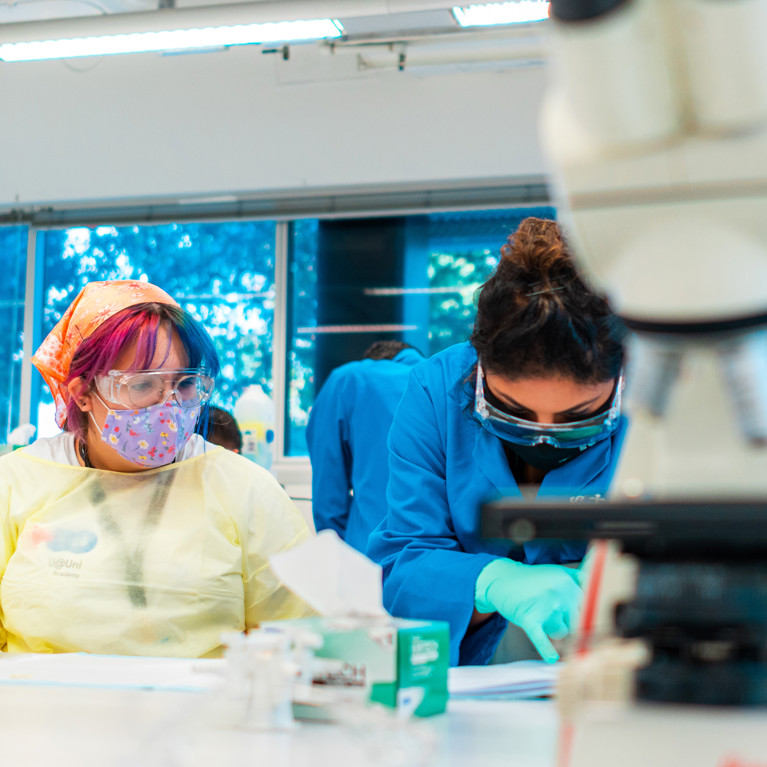- Posted on 8 May 2025
Education is a fundamental human right, and universities have a responsibility to ensure it is accessible to all.
We are not just institutions of learning and research, we are service providers who must design our systems to truly serve our students and communities. This means breaking down barriers, challenging outdated structures, and creating real opportunities for those who have been historically excluded.
Growing the sector while ensuring equal access is more pressing than ever given the Universities Accord outlined projections doubling university places to 1.8 million annually by 2050.
It is a critical national imperative to prepare Australians for careers in the context of great economic, technological and societal change. Universities will be central to how Australia equips young people with the skills to thrive and to strengthen our economy in the next few decades. With equity of participation now a national priority, this is the time for bold action.
Government policy needs to support this transition but just as important is universities taking responsibility for opening their doors to students who have been historically underrepresented in higher education. We still have a long way to go to reach this goal.
University management are often dismissed as living in ivory towers (or ‘brutalist towers’ when it comes to UTS). Our work should not be disconnected from the realities students face. Teaching and research must focus on practical solutions to real-world challenges. This means taking a hard look at the systemic barriers in education and rethinking how we define and assess academic merit. It means looking outside of the ATAR ranking system and finding new and innovative ways to identify potential, especially within cohorts who are at an educational disadvantage.
Students from low-socioeconomic (SES) backgrounds, regional communities, First Nations communities, and students with disabilities are often at a disadvantage due to disparities in educational resources and support. Without deliberate intervention, these disadvantages persist. We saw this play out in the aftermath of the Bradley Review: the demand-driven system was expected to increase participation among these cohorts, but it failed to deliver.
We cannot afford to repeat history. Addressing these inequities requires more than good intentions. It demands strategic, sustained and bold action.
There is a dangerous misconception that diversity, equity, and inclusion (DEI) efforts dilute academic excellence. This could not be further from the truth. Diversity fuels excellence. It fosters innovation, creativity, and resilience. It makes us stronger, not weaker. Equity and excellence are not competing forces – they are two sides of the same coin.
We know we can broaden our student base while maintaining the highest standards of excellence, and while putting students first. Because we’ve already done it.
Through existing programs, we know that when given the right tools, students from diverse backgrounds thrive. UTS has some of the highest success rates for students from low-SES backgrounds. Our latest success rate for low-SES students is 90 per cent, far exceeding the sector average of 82.45 per cent. This tells us that when students are given the chance, they excel. The barriers are not about ability, they are about opportunity.
Universities have the power to transform lives. We are engines of social mobility but only if we actively create pathways for those who have been locked out.
The future of university admissions must be one where talent is recognised in all its forms, potential is nurtured, and systemic barriers are dismantled rather than reinforced. Schemes such as UTS’s Pathways Plan – a sector-first initiative to drive systemic change by offering multiple entry routes for students from underrepresented backgrounds – is a step toward that future, but it is not the final step.
Through strategic partnerships, sustained investment, and an unwavering commitment to putting students and communities first, we intend to set a new benchmark for what higher education can and should be. We are not alone in our journey but the whole sector is stronger when we collaborate to create a brighter future for all young Australians.
This article was first published in The Australian.
Written by Amy Persson
Pro Vice-Chancellor (Social Justice and Inclusion)


